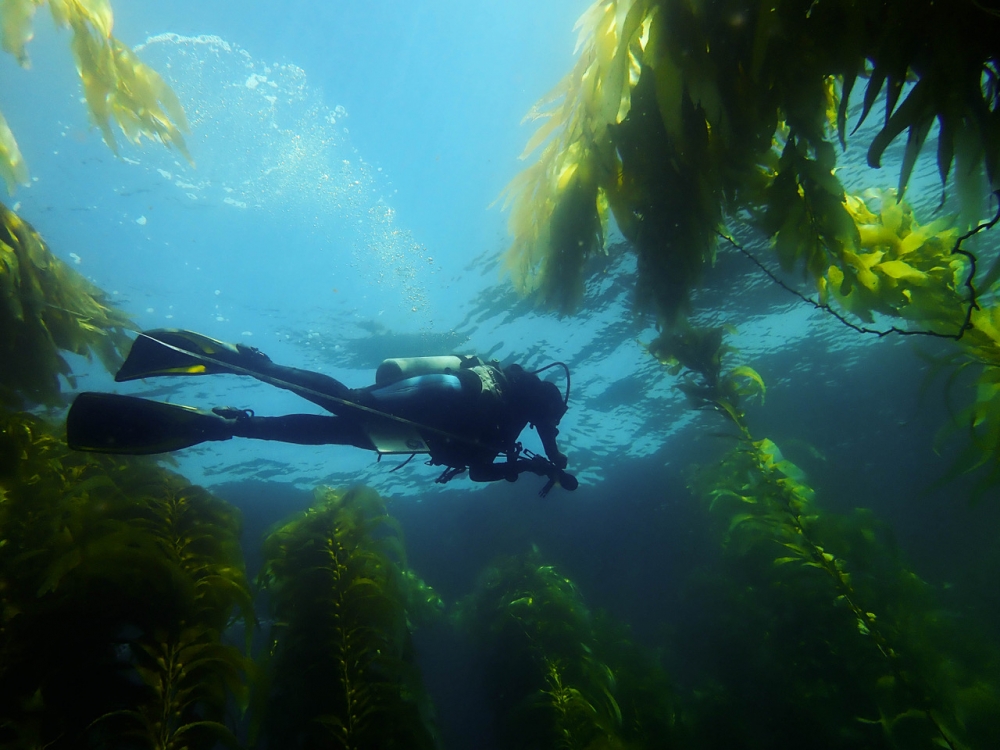
Protecting Marine Life

California’s 1999 Marine Life Protection Act established a statewide network of marine protected areas (MPAs) to conserve marine life and habitats along the state’s 1,100-mile coast. In 2007, the first regional MPA was situated in the Central Coast region, covering Point Conception to Pigeon Point north of Santa Cruz. Among the three areas that followed was the South Coast region, spanning from Point Conception to the California-Mexico border, including state waters around the Channel Islands.
The next step was for scientists to capture a snapshot of the ecosystems upon which future monitoring would be based. Jennifer Caselle and Carol Blanchette, both research biologists at UC Santa Barbara’s Marine Science Institute, led the charge to integrate and synthesize 10 baseline MPA monitoring projects from Southern California.
UCSB held a number of workshops to encourage local researchers to work together. Now, five resulting papers have been published as a special edition of the journal Marine Ecology. Caselle and Liz Whiteman of the Ocean Science Trust edited the issue, which covers a range of topics, from biodiversity to citizen science.
“Although the impetus for all this work came from the MPA program, the papers aren’t necessarily about MPA performance,” Caselle said. “Instead, they establish the baseline conditions at the implementation of the MPAs and set the path forward for long-term monitoring.”
A key paper on biodiversity drew from several different projects that conducted biological monitoring, looking for patterns across a variety of ecosystems: deep water rock and sand, shallow water rock, sandy beach and rocky intertidal. This was the first time that spatial patterns of biodiversity have been compared across such diverse habitats.
According to co-author Caselle, examining patterns of biogeography and biogeographic breaks allowed investigators to identify the places that need monitoring and how to situate future monitoring to capture the range of biodiversity.
“The idea was that if patterns of biodiversity are similar across different habitats, then perhaps the drivers of that biodiversity are the same across these really disparate habitats,” Caselle explained. “Where differences occur, we can start to think about the relative importance of various drivers such as oceanography or sea temperature. Our results, in fact, showed broadly similar patterns of biodiversity even in very different habitats.”
Another important paper for informing future monitoring explores different forms of citizen science. The baseline program included three different citizen science projects: one utilizing highly trained volunteer scuba divers, a second based on young students and their teachers and a third involving commercial lobster fishermen. The paper analyzes these different models for citizen science as case studies.
“That’s important because it shows investigators the constraints and benefits of different models,” said Caselle, again a co-author. “In addition, the results of the paper will inform citizen science monitoring up and down the state of California — and likely globally.”
A third paper explored the possibility of using seabirds as proxies for fish recruitment. The scientists compared an independent measure of juvenile fish abundance with a measure derived from seabird foraging and found that seabird-based estimates were similar to scuba-based estimates at larger scales. The findings support using seabird studies to provide additional information not captured by more conventional fish surveys. They also help resource managers better understand local patterns for communities of multiple and individual fish species.
The two final papers focused on creating indices — one for the health of rocky reefs and the other of fishing pressure across Southern California.
“The takeaway of the whole issue is that it gives a broader look at the marine ecosystems in the Southern California bight than has ever been done before,” Caselle noted. “The special issue provides some lessons on how disparate data sets taken by different researchers with varying disciplinary skills can offer broader insight to the ecology and to the human patterns in the region.”



